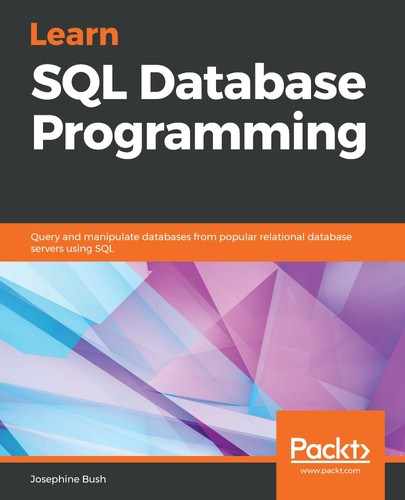In this chapter, we covered what data types are and how they are used. We learned about specific data types and what data can be stored in each. Data types include string, numeric, date and time, and other types such as JSON and spatial types. String data types include char and varchar, binary and varbinary, blob, enum, set, and text. Numeric data types include bit, int, float, double, and decimal. Date and time data types include date, time, datetime, timestamp, and year. We learned from the perspective of MySQL data types, but where there were differences versus Oracle, PostgreSQL, and SQL Server, those differences were noted.
We also went through some examples of types and values of data to see examples of how to assign them correctly to data types. This section included an explanation of why you need to be careful when selecting a data type and how it can impact database performance.
In the next chapter, we will cover designing and creating a database. The chapter will discuss indexing, what it is, how to use it, and what it means for database performance. The chapter will also explain how to create a database and table. This includes guidelines for naming conventions, understanding SQL code errors, formatting SQL code for readability, and how to apply data types and integrity to your tables.
